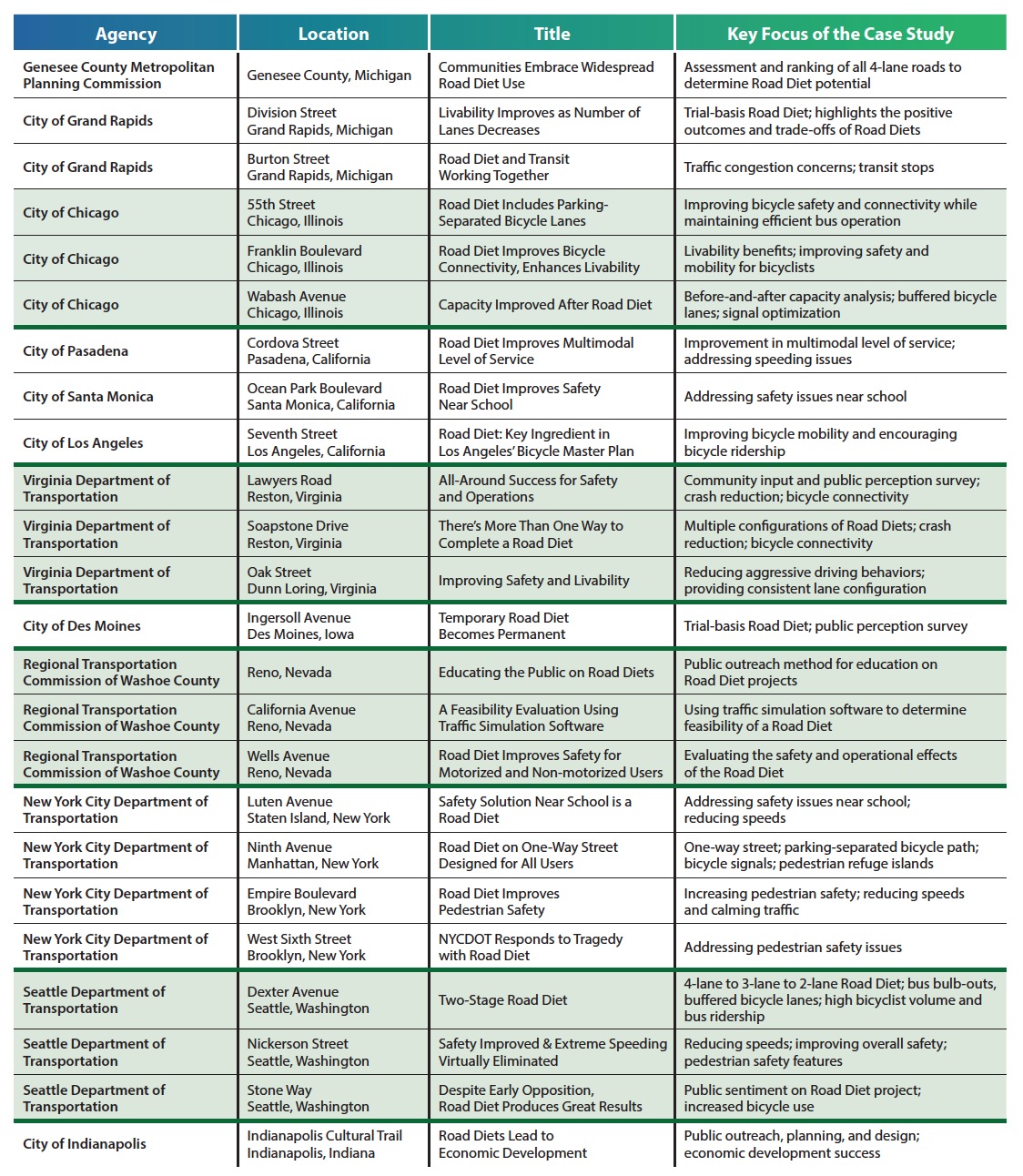UNITED STATES DEPARTMENT OF TRANSPORTATION
Introduction
Background
Four-lane undivided highways have a history of increased crashes as traffic volumes rise, due to motorists sharing the inside lane for higher speed through movements and left turns. Additionally, as active transportation increases, communities desire more livable spaces, pedestrian and bicycle facilities, and transit options, which are not easily accommodated by a 4-lane undivided roadway. One solution that benefits all modes is a Road Diet (Roadway Reconfiguration).
A Road Diet is generally described as removing vehicle lanes from a roadway and reallocating the extra space for other uses or travelling modes, such as parking, sidewalks, bicycle lanes, transit use, turn lanes, medians or pedestrian refuge islands.
Road Diets have the potential to improve safety, provide operational benefits, and increase the quality of life for all road users. Road Diets can be relatively low cost if planned in conjunction with reconstruction or resurfacing projects since applying Road Diets consists primarily of restriping.
For additional information about Road Diets, visit the FHWA Office of Safety Road Diets website at http://safety.fhwa.dot.gov/road_diets.
Road Diet Case Studies
Improving safety is a top priority for the U.S. Department of Transportation, and the Federal Highway Administration (FHWA) remains committed to reducing highway fatalities and serious injuries on our Nation’s roadways through the use of proven safety countermeasures, including Road Diets. Along with the development of the Road Diet Informational Guide, the FHWA Office of Safety commissioned a series of 24 case studies highlighting Road Diet implementations throughout the United States. The aim of this document is to provide State and local agencies and Tribal governments with examples and advice that can assist them in planning and implementing Road Diets in their own jurisdictions.
Many of the concepts described in this publication are illustrated in photographs and drawings. The drawings are for illustrative purposes only; they are not to scale and should not be used for design purposes. It is important to note that the lettering styles, arrows and symbols used in these case studies are not always consistent with those prescribed in the Manual on Uniform Traffic Control Devices (MUTCD). When employing treatments included in the case studies, only MUTCD-approved lettering styles, arrows and symbols should be used. Additionally, any highway agency wishing to implement a treatment that has not been included in the most recent edition of the MUTCD must request experimentation approval from the FHWA.
Download full version (PDF): Road Diet Case Studies
About the United States Department of Transportation
www.dot.gov
The mission of the Department is to: Serve the United States by ensuring a fast, safe, efficient, accessible and convenient transportation system that meets our vital national interests and enhances the quality of life of the American people, today and into the future.
Tags: Bicycling, Complete Streets, Cycling, Pedestrian, U.S. DOT, United States Department of Transportation







 RSS Feed
RSS Feed